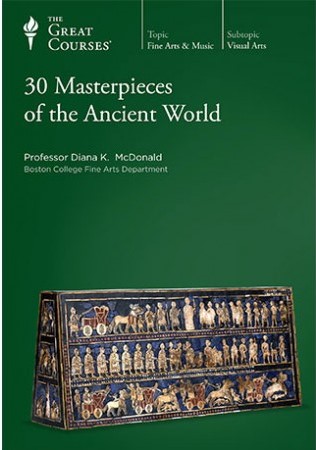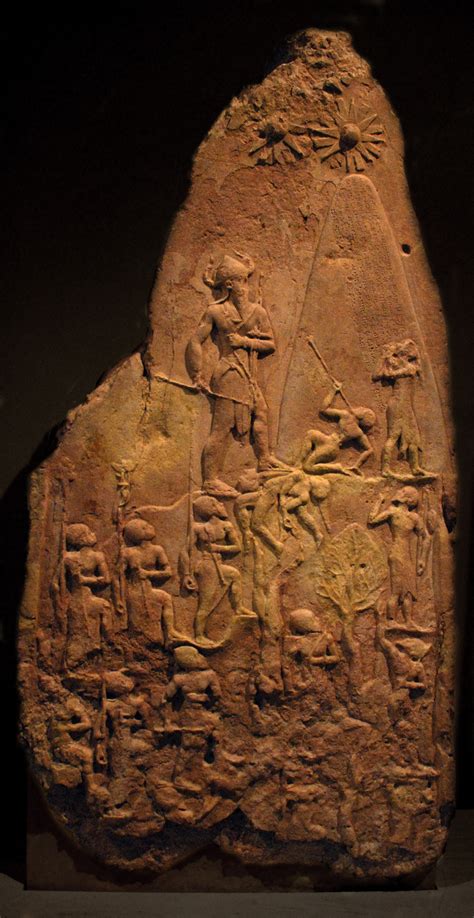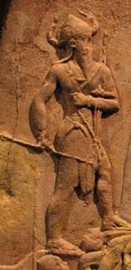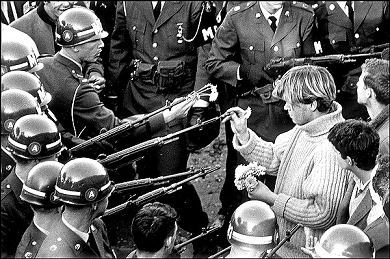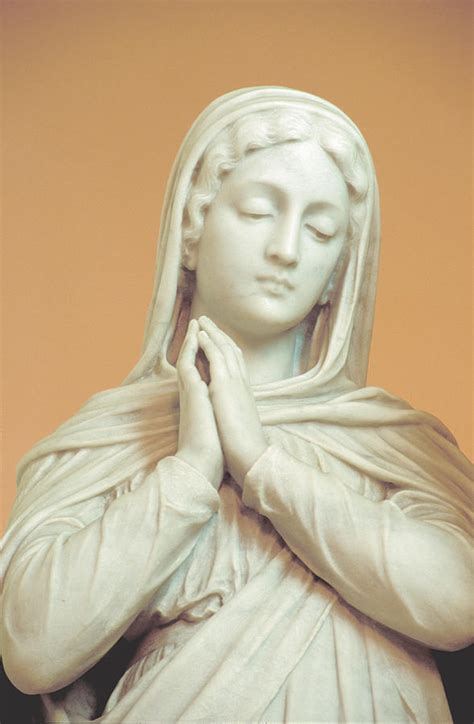|
home | what's new | other sites | contact | about |
||||||||||
|
Word Gems exploring self-realization, sacred personhood, and full humanity
Weaponized Art: Part II 30 Art Masterpieces Of The Ancient World
Professor Diana K. McDonald is an art historian on the faculty of Boston College. She has spent her life investigating primeval art – even from age 6, she jokes, with a trip to Mexico’s art treasures, courtesy of her parents. Dr. McDonald has critically examined ancient artwork in the museums and archeological sites of more than 40 countries. In the following discussion, I offer my observations concerning the principle features of ancient art – what it meant to the people of long ago, its purpose, how it impacted the development of civilization, and its effect on the evolution of the human spirit.
art in service of cosmogony Picture a tribal chieftain of a few thousand years ago. He and his troops have managed to subdue competing factions in the neighborhood. However, the warlord plans to expand his influence beyond the confines of the local citadel. He’d love to string along recent victories into a series, gobbling up nearby peoples and territory. But there's systemic problem with “imperial overreach.” As the despot’s domain grows, it all becomes thinly stretched and harder to govern. How do you keep the far-flung serfs from getting uppity and wandering off the plantation once they’ve been conquered fair and square? so be good for goodness sake This alpha-male needs a means of long-distance societal control, the ability to strike fear into the hearts of would-be malcontents. What the aspiring emperor requires is a jazzed “P.R.” campaign, a psychological warfare, something along the lines of a child's apprehension of Santa Claus: “he knows when you are sleeping, he knows when you’re awake, he knows when you’ve been good or bad, so be good for goodness sake,” that sort of thing. To support his long-reach herd management objectives, apotheosis is called for -- the morphing of the warlord into a god; or, at very least, a god’s special agent on Earth. But, it’s not so easy to assume the mantle of a god, an irritating fact not lost upon the chieftain. He knows full well, but never admitting, that when he’s cut he bleeds, when he’s tired he must sleep and eat, and then, most annoying of all, at the end of days, he dies like any dog in the street. Well, this truly is aggravating. redistilling reality: dear leader in search of foundation myth So, what’s an ambitious despot to do? How to convince the serfs that he has a divine right to rule over them, that it's immoral even to question his authority? It’s a hard door-to-door sell in most neighborhoods. The answer, however – simple and elegant – comes to the tin-star chieftain in a night reverie. Why not redistill reality, just say it's so, tweak the notion of what’s true, reshuffle the creation myths, and dream up a more advantageous cosmogony? Editor’s note: “Cosmogony” has two root ideas: “cosmos” meaning “order” and “gonia” as “genesis” or “origin.” Think of Kipling’s “Just So Stories,” fantastic accounts of how animals came to have certain qualities; you know, how the leopard got his spots. To the credulous crowd, and to those preying upon them, a cosmogony provides a basis of belief, an ordering paradigm upon which to build thought and deed, loyalties and prejudices, perceptions of morality in this world and the hereafter. the man who would be king Dissatisfied with appellation of mere “local chieftain,” and with some help of cronies who will become temple priests, the warlord invents, not only a new and improved version of himself but, an entire cosmogony, a reordering of the origin and meaning of the whole universe, in which, of course, he plays the starring role. As we learn in the “30 Art Masterpieces” lectures, and from many other historians, these ancient thugs, coveting better press, image, and legacy, merchandized the idea that the gods on high had invested them with divine pedigree. A carefully crafted gestalt, it was sold to the people primarily by the temple priests -- the king's ambassador-accomplices -- who worked conspiratorially with him in a grand religio-state charade of manufactured respectability, focused upon power and control over the masses.
Editor’s note: All of this disingenuous pageantry and stagecraft brings to mind some very impolite words by comedian Jerry Seinfeld (4-15-11), who, quite seriously, commented on a British royal wedding: "Well, it's a circus act, it's an absurd act. You know, it's a dress-up. It's a classic English thing of let's play dress-up. Let's pretend that these are special people. OK, we'll all pretend this - that's what theatre is. The British have the greatest theatre in the world. They love to dress up, and they love to play pretend. And that's what the royal family is. It's a huge game of pretend. These aren't special people. It's fake outfits, fake phoney hats and gowns," [all designed to make you believe that they are better, more worthy, than you]. Editor's note: We're also reminded of Jesus' sardonic comment on history's murderous politician-criminals: "they call themselves benefactors." Not much has changed in 5000 years. Also, in the taped lectures of Spirit Guide Abu, communicating via direct-voice medium Rick Rickards, Abu speaks of similar things. During his Earthly life he had worked as a temple priest in Egypt, circa 1500 BC. The priests, he said, were deceiving and gaming the people, and manipulated the fears of the Pharaoh, as well. Abu confesses that, in those old days, he was one of the bad guys. Essentially, the priests were hiding behind the prestige of religion as they role-played the pious, spiritual man. And in this ruthless competition among the fake-news sainted, these who wielded the true power behind the throne via the fear of death, Abu was brutally stabbed by a rival priest and left to suffocate in his own blood, as he died, ignominiously, in a ditch.
'king of the universe' and all that rot And so, now, magically, the petty warlord is reconstituted as elite, above and better, no longer of the unwashed rabble in the marketplace. He's a god, don’t you know; or, at minimum, a son of god. As he reintroduces himself to the mob, this nouveau riche potentate hurls wild, self-identifying epithets: “King of the Four Quarters,” “King of the Universe,” “Divine Son of God,” and many other such modest proposals - all of which are designed to create the illusion that the newly-ascending lord commands power over life and death.
Editor's note: Dr. James K. Hoffmeier, Egyptologist, author, “Israel In Egypt,” as quoted in the documentary, “Patterns Of Evidence: Exodus.” “Pharaoh was the god of the Egyptian state. He was responsible for cosmic order. He was responsible for the proper flow of the Nile, the rising of the sun, the fertility of the fields.” The plagues of Egypt set up a contest between Pharaoh and the God of the Hebrews, essentially saying to Pharaoh, you are not in charge of these elements of nature. And so the plagues begin with a curse upon the Nile and end with aberrations with the sun, and so these two things that Pharaoh purportedly controlled become dramatic markers indicating that he does not control them.
But, how to extensively market this “P.R.” campaign? It’s no good, you see, if you’re a legend only in your own mind. You’ve got to get your message out, as the politicians today say. But how can this spin-doctoring be accomplished? You just need an elaborate "wag the dog" program. But there's no mass media for you to corrupt, and you can’t just pass out leaflets or rewrite textbooks when pretty much everyone, except the temple priests, is illiterate – a state of ignorance well encouraged by the warlord. art as visual propaganda In virtually every ancient society, the answer to the question of “P.R.” became one of visual propaganda. The artwork in ancient times was not offered as “art for art’s sake” - not one pure example of that. What we find, instead, is art in service of cosmogony, art as cultish indoctrination, art as societal control, art as immortality strategy. All of the "30 Art masterpieces," to one degree or another, says Dr. McDonald, were used for this visual propaganda effort; none of it was "art for art's sake." The king, as supreme hegemonic figure in this concocted melodrama, was portrayed as a kind of “comic book super-hero,” larger than life, son of the gods, invested with frightening powers, a living blessing to loyal subjects, an ultra-nemesis to malcontents, the guarantor of the land’s fecundity, the protector of peace and order in the world -- you get the idea. We expect him to wear a red cape and some bold letter on his puffed-out chest. Editor’s note: The “30 Art Masterpieces” lectures feature a great many, more than 30, examples of ancient artwork. I will not attempt to reproduce them here; you’ll want to personally review this information. But allow me to offer one notable example: The Victory Stela of Naram-Sin of Akkad.
the king as underwriter of the land’s fruitfulness Ancient totalitarians combined the offices of “state and church,” arrogating to themselves authority over the people as both king and priest; in effect, the king was also the chief priest of the temple. This is easily discerned in many examples of the artwork. The king was portrayed as a kind of bridge between heaven and earth. Part of his duties was to call upon the pantheon to bless the land with fruitful harvest. But here’s how the game was played – then and now. If the crops were good in a particular year, the king, in his majesty, took full credit for the bounty. But, if the rains didn’t come, if food supplies ebbed lower, the people were blamed for their misdemeanors, having made the gods angry, now requiring propitiation, offerings, sometimes human sacrifice, and, at very least, the customary amount of groveling to make things right. Today, when things go wrong, the Pulpit Elite will decry the people’s “lack of faith,” with God, in consequence, and in his severe but holy justice, having withheld blessings. It’s “heads I win, tails you lose.” Editor’s note: One of the etymological strands of the word “priest” comes to us via the Latin with a root notion of “bridge.” We see this in the Latin pontus, or today’s French word for “bridge,” pont, and also the modern word “pontoon,” a temporary bridge or landing stage. The ancient king was the original “pontifex maximus,” the “supreme priest” or “chief bridge-builder” between man and god. But notice the diseased cosmogony, take note of the draconian implications. In such dystopian universe – one crafted by Dear Leader – a farmer cannot simply pray on his own and expect a Higher Power to send rain for his crops. Well, how would that ever work? The gods won’t listen to you, scum of the Earth that you are. Whatever god or gods there might be could never love you or be concerned about you enough to listen to anything you have to say. What you need, little serf, is a professional “bridge-builder” to the gods. That’s the ticket. And, lucky for you, in your abject worthlessness, we just happen to have a local god-representative on duty, for your convenience, in that giant palace right over there.
art as architecture, the man-made mountain, nearness to the gods Dr. McDonald points out that many ancient societies created a “man-made mountain” – stupas, ziggurats, three- and four-sided pyramids, colossal mounds, staged temple-towers -- all these, gigantic stage-props, quite useful to an aspiring Dear Leader, a pageantry depicting him atop a universal food-chain. Even the earliest-known artwork – the Chauvet-cave animal representations of 35,000 years ago – might fall into this category as these paintings were created within the bowels of a real mountain; art, therein, amidst hushed silence of venerable seclusion, issued as some sort of ritualistic rite-of-passage. Ancient man’s creation of a symbolical mountain seems virtually to be a universal need and impulse. We find these mammoth structures in the Americas, Egypt to Mesopotamia, the Far East and South Asia. Some of these societies were isolated, with no contact with the world at-large. And yet the “man-made mountain” persisted, seemingly, everywhere. Why were these edifices created? Many utilitarian reasons could be offered – temple worship and prayers, burial chambers, rites of blood sacrifice, astronomical observation, ritualistic matings with temple concubines, ostentatious displays of kingly power. However, the essential purpose of these “mountains” – possibly, in all of these ancient societies -- likely revolves about a central concept of nearness to the gods. Deities were believed to be “up there” and an elevated platform seemed efficacious in terms of reaching them; "nearer thy god to thee," and all that. Editor's note: Today our "man-made mountains" are enormous temples and formidable cathedrals with soaring steeples. But, as we are instructed by august Spirit Guide Elizabeth on the other side, we cannot find God in buildings made with hands, but only within the sacred soul.
the fear of death as art form Man-made mountains were not built in a day. Some of these required the labor of many thousands of artisans, working for decades; in some cases, longer than a human life-span. A construction project of a man-made mountain as burial chamber might consume the lion’s share of a kingdom’s gross national product for scores of years. In time, the king’s son would ascend the throne and, not to be outdone by a father, would embark upon his own massive burial-chamber construction project. The writings on the Word Gems site frequently address issues such as the fear of death, the dysfunctional ego, and the “false self.” In a sense, these maladies are never so easy to label as with the ancients. We might say, “it’s all they did.” Well, we moderns do the same, but in those primeval times, with absolute power in the hands of a few, we readily observe what total power will concern itself with. Imagine spending most of one’s life, and commandeering most of a country’s wealth, not to mention the lives of thousands of slaves and workers – plus, the typical burial chamber packed with gold and food and tools, and also a cadre of sacrificed servants and animals -- just to mollify one’s little fear-based cosmogony, one’s little cockeyed beliefs about the afterlife. As Dr. Ernest Becker puts it, it’s an “immortality strategy.” Here, too, not much has changed in 5000 years.
death, resurrection, rebirth We’ve spoken of the man-made mountain as a recurrent theme in the ancient world. Why did this near-universal idea gain currency? See, if someone believes that God is “up there,” and “far away,” this is proof presumptive that the “false self” is running one’s life; it means that one has not yet found God within the "true self." Barring this discovery, the Needy Ego is led around by feelings of “I don’t have enough” because “I am not enough.” Its greatest nightmare is what it perceives as the greatest loss – which would be death. In the “Evil” articles, we discussed how what we call "evil" is an expression of weakness, of essential powerlessness. The Naram-Sins of the world and their “victory stelas,” their grasping, brutal, power-and-control activities, speak to an inner neediness of “I am not enough.” And this spiritual poverty leads them to bolster and parade themselves in untoward ways. If the Needy Ego believes that the gods are unfriendly and angry, it will attempt to placate them. It will do whatever it feels it must to get on their good side; including, offering human blood sacrifice: “Better they than me.” Have you ever asked yourself, regarding supposedly modern religions, where did we ever get this dark and dystopian idea that blood sacrifice is pleasing to God? Editor's note: And to those who answer with, "the Bible tells us so," I would direct you to the "Bible" page with 100 articles. As I reviewed Dr. McDonald’s research, a most fascinating item, I felt, presented itself as, what appears to be, a universal theme; as noted, the man-made mountain is an example of such. But, since the same Needy Ego, irrespective of time or geographical setting, fuels the unenlightened human condition, we should expect certain points of confluence across diverse societies. Another example of "universal theme" came to mind. savior-gods of history: these ‘resurrection’ epics are more properly viewed as ‘reincarnation’ myths In the “Jesus article,” I presented historians’ findings concerning “savior gods of history.” You’ll want to review this information. It’s one more universal theme – powered by the Needy Ego. How does it work? Let’s recall that an ambitious ancient warlord, flush and heady with recent military victories, sought for means by which he could keep a tight fist on an expanding conquered domain. Hence, the rise of new power-and-control cosmogonies. But, here’s where it gets even more interesting. The Needy Ego, one who would be king, desired even more than godhood. He wanted to intimidate his people with the fear that “I’ll be back”; that, he would be reincarnated -- which is a myth and fake news -- and would then “check his list to see who’s been naughty or nice.” This is classic cult psychology; they work hard to get you “coming and going” with fear and guilt so that you’ll feel there's no escape from their clutches, even in death.
Is it just an accident that varied and diverse ancient societies dreamed up savior-death-resurrection cosmogonies to help market a larger-than-death image for the local warlord? In these different cultures, the names and players are all different, but there’s always some reference to a dead savior god making a big come-back via resurrection, or a reincarnation. Thrown in, as well, to tug at the heart-strings, there’s often a “mother goddess,” some “queen of heaven,” to help set things right. Do we see how these concepts could be very handy for a Naram-Sin type-of-guy seeking to maintain control of the masses? All of this cultish strategy has had a long run in world history - courtesy of (1) those who are afraid of death and need the safety of being ruled over by an august figure, and (2) a war-mongering overlord who needs to be needed, needs the adoration of the crowds, to feel good about himself.
art in service of cultism People become angry when I frame the subject of cultism to include their friendly neighborhood church and their “Nice Young Man” as local pastor. Well, I know all about the “Nice Young Man.” I used to be one, and went to school with hundreds of them. See my article, “Spirituality, Part III.” But I digress. People become angry and want to say, “How dare you call my church a cult! We’re not Jim Jones and we don’t drink the kool-aid!” Yes, I understand. But, what many do not understand is the essential core essence of cultism. My articles on cultism I count as among the most important on the Word Gems site. Fundamentally, this dysfunction has nothing to do with “drinking the kool-aid.” As I explain in those writings, the etymological root of cultism is “to cut,” to pare, prune, refine, redirect, and recast, that is, to reorder, reconstitute, and repackage the very nature of things, the very meaning of life and the universe -- all in service of some Dear Leader's propaganda scheme to bring you under his control. I must not attempt an entire recapitulation of this discussion in the present forum but invite you to study these articles for yourself. However, for our purposes here, it is important to understand that the production of a cosmogony, which is a redistilling of reality, is pure and unadulterated cultism, in its most fundamental meaning. It is recreating the origin of the universe in favor and in the image of some "holier than thou" elitist cabal – which means that the promoters of the cosmogony, if you allow it, will make sedulous attempt to bring you under their self-serving control. Editor's note: Is it so different today? There are plenty of Naram-Sins in our world -- religious, corporate, political, academic, scientific -- who would just love to convince you that they are larger than life with a virtual divine right to own your soul, to give it meaning, to define how life works and how you should live. These totalitarians would brutally and violently oppress you, if they could, just as in the old days, but for a little thing called the protections of the rule of law; however, totalitarian-socialists are working hard to overturn these safeguards. The relative peace that we enjoy today is an anomaly in history, a brief oasis in the maelstrom of the Needy Ego's rampage; as Adrian and I tend to sardonically muse, "we'll soon be getting back to normal." We fancy ourselves as advanced and modern, that we'd never do the things that were done in ancient times. And yet, so often, in this arrogant sentiment, many today will support dark and dystopian totalitarian-socialistic cosmogonies, the hidden philosophical infrastructure of oppression. If we were to examine many of the essential beliefs and doctrines of popular churches, politics, and materialistic science, we would find teachings as anti-humanistically repugnant as any cosmogony of the ancient world. Dr. Carl Jung was right when he said that, for all of modern man’s tech advances, for the vast majority, we have made no psychological progress in these last thousands of years; on the level of the psyche, we're still running around in loincloths, with painted faces, brandishing wooden spears. On the other side they say this, as well; in that, the many, in their legions, upon transition, stumble upon the shores of the next world in a state of utter confusion and fear, having been manipulated and made merchandize by the Great Despotic Cultish Religions of this world. Whatever safe harbor we might temporarily enjoy today from a would-be Naram-Sin, we do so as a rule-of-law heritage -- today, a wasting asset -- from people like Thomas Paine, Thomas Jefferson, John Adams, and James Madison. Think of what “normal” means. The average person, during the last several thousands of years of recorded history, has lived under constant threat of oppression from governmental or religious overseers; constant threat of invasion to privacy or personal freedom; constant threat of disruption to peaceful mode of living. The personal freedoms, now fast eroding, a legacy of the US Founders, represent a tiny island of self-determination in a vast ocean of deception, brutality, and enslavement. Few today perceive the uniqueness of what we have, or had. Yes, we’ll soon be getting back to normal.
ancient art: final thoughts Let's ask the question again: Have things really changed in the world? Somewhat, but it’s an uneasy peace. As the Gnostics believed, and I concur, this world is irredeemable. Do we have “art for art’s sake” today? Some of it, yes. But, as Dr. McDonald points out, most artists are very mindful of a prospective audience; and therefore, the Needy Ego will tend to pander and offer art as means of self-aggrandizement. It’s a little harder today to create battles suitable for framing in a “victory stela,” but such sentiment, for some, is not so far below the radar. One of my favorite quotations about art is from President JFK: The life of the arts, far from being an interruption, a distraction in the life of a nation, is close to the center of a nation's purpose - and is a test of the quality of a nation's civilization. What is a “nation’s purpose,” the “test of the quality of a nation’s civilization”? In a short phrase, it's the promotion of human dignity, human freedoms, human self-determination. Ancient art was the antithesis of all this high-mindedness. One grand feature of ancient art was the very poor showing of human beings. People were so often depicted as beaten-down serfs, beasts of burden, some Dear Leader’s largess in war. Kenneth Clark made this observation, too. However, finally, in about 1000 AD, the world's art began to reflect something else. Dr. Clark instructs: Man is no longer Imago Hominis, the image of man, but a human being, with humanity's impulses and fears; also humanity's moral sense and belief in the authority of a higher power. Art should take us to a higher plane. It should teach us about transcendent worlds of beauty and sublime vistas of consciousness. It should promote the sacred dignity of humankind, both women and men.
|
||||||||||
|
|
